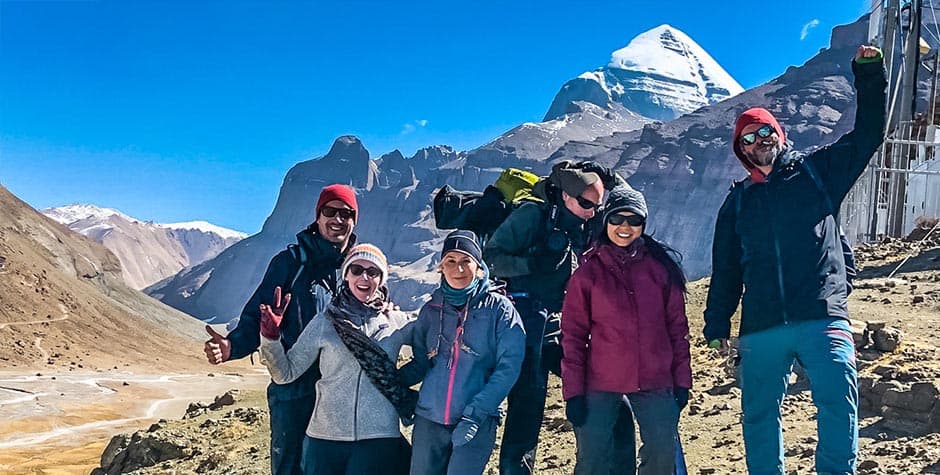The Potala Palace will be the first thing that assures you you are in Tibet if you are starting your Tibet tour from Lhasa. It stood towering above the old Lhasa area, which is also known as the Tibetan quarter to many returning visitors. You will have your first glimpse when you cross the bridge after the Lhasa Train Station. The palace will appear behind the small hill in Mid Lhasa.

History of Potala Palace
The Palace was built surrounding the meditation cave of King Songtsen Gampo of Seventh century Tibet. He is a king which unifies Tibetan tribe and adopt Buddhism as the official religion. The location of Potala palace has now become central of Lhasa but in old days its located at the western edge of Lhasa city. The palace was built on top of the Marpo Ri hill and the hill looks like an elephant in the sleeping pose. It is currently a biggest functional man-made structure in Tibet and it’s list under UNESCO world heritage site list.
Potala, The name derived from the name legendary adobe of Lord of compassion Avalokiteswara. Tibetan believes that there is a close tie between him and Tibetan people, which is why we believe King Songtsen Gampo is a manifestation of the Lord himself. It also serves as an official resident to all the Tibetan rulers how ruled Tibet from Lhasa. The palace is further expanded by the great fifth Dalai Lama in the 15th century.
The Potala like any other medieval architecture is heavy at the bottom and light at the top. The thickness wall of the palace is said to be more them eight meters. We will see the example at the entrance of the palace. On the top, it is designed to be light and they used sticks from straw to make the wall, which gives the stability and the strength. The Potala Palace is a great example of Tibetan architecture in the seventh century. Some observer also says it has the functionality of aerodynamic against the strong wind of high altitude of Tibet. But I will leave this to your observation.
Every year, thousand of devotees would donate white paint, milk, and sugar for painting of the palace. We used the sugar and milk in the paint. The sugar gives the function of stickiness to the pain. and the white paint is not painted using the brush rather we would flash the paint by hand in the lower section and we would use the pipe of paint the higher sections from the top. A daredevil would use the rope to guide the pipe from half way down on the slope of the building.
Travelers guide to Potala Palace
Since the building is old and under the preservation from government. There are many things the travelers are forbidden to bring and to do in the palace.
- First, the travelers are not allowed to bring any eatables and drinks in the Palace. So it is advised the visitor to bring nothing to drink in the palace. We do understand the importance of staying hydrated in the high altitude and under the soaring heat of the sun. There is a stall up in the Deyang Shar courtyard of Namgyal Monastery.
- It’s the very sacred place and it contains lots of sacred objects displayed inside the palace. The travelers are prohibited in taking a picture inside the palace if you do you are risking the penalty on your guide, who works so hard to make your trip worthwhile. So please do as rules say.
- You will have to climb up about 300 meters above the ground level for the tour to Potala Palace. So it is advised to delay the visit to the time you are properly accommodated with the high altitude and dry atmosphere of Lhasa. If you do not accommodate well and if you have a group member in the elderly age, please bring the walking stick for climbing up to the palace.
Here are some of the Potala palace fun facts
- It’s not built at one time. The palace was extended many times in the history.
- Milk and Sugar are used with other ingredient to make the paint.
- The palace house a many precious stones, many of which are said to be a single piece in this world
Read more about Potala Palace in Wikipedia.
Here are some of the Potala palace fun facts
Tsurphu Monastery to Namtso Lake Trekking tour
Ganden to Samye Trekking Tour
Ganden Samye Group Trekking
Easy Everest Group Tour
Lhasa to Guge and Kailash Group Tour
Central Tibet Journey Group Tour

Tenzin Travel is the best Tibetan Travel agency in Tibet. Our agency is one of Tibet’s most experienced tour operators, with over 20 years in the industry. Founded by a local Tibetan family with decades of expertise as guides, managers, and route planners. We craft personalized itineraries for every traveler. Our agency is the highest-rated and most recommended Tibet travel agency on TripAdvisor, Google, and Lonely Planet.
We can make holistic arrangements for your trip to Tibet. Including a Tibet Travel Permit, a Tibetan tour guide, flight tickets, train tickets, vehicle arrangements, and hotel bookings in Tibet.
Our Lhasa office is just steps from Barkhor Square. All our Tibetan team ensures deep cultural, linguistic, and religious insights, setting us apart from other agencies.
Beyond tourism, we support Tibetan communities by donating a portion of each tour to local projects. Your travel to Tibet is about more than profit—it’s about the opportunity for us to give back.






